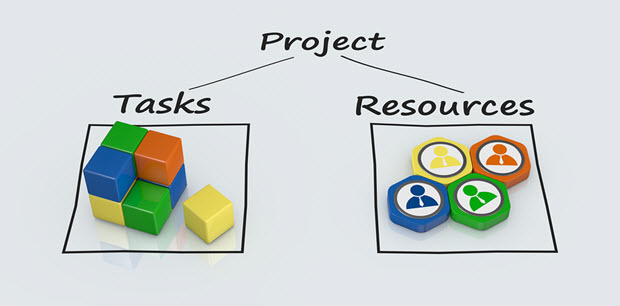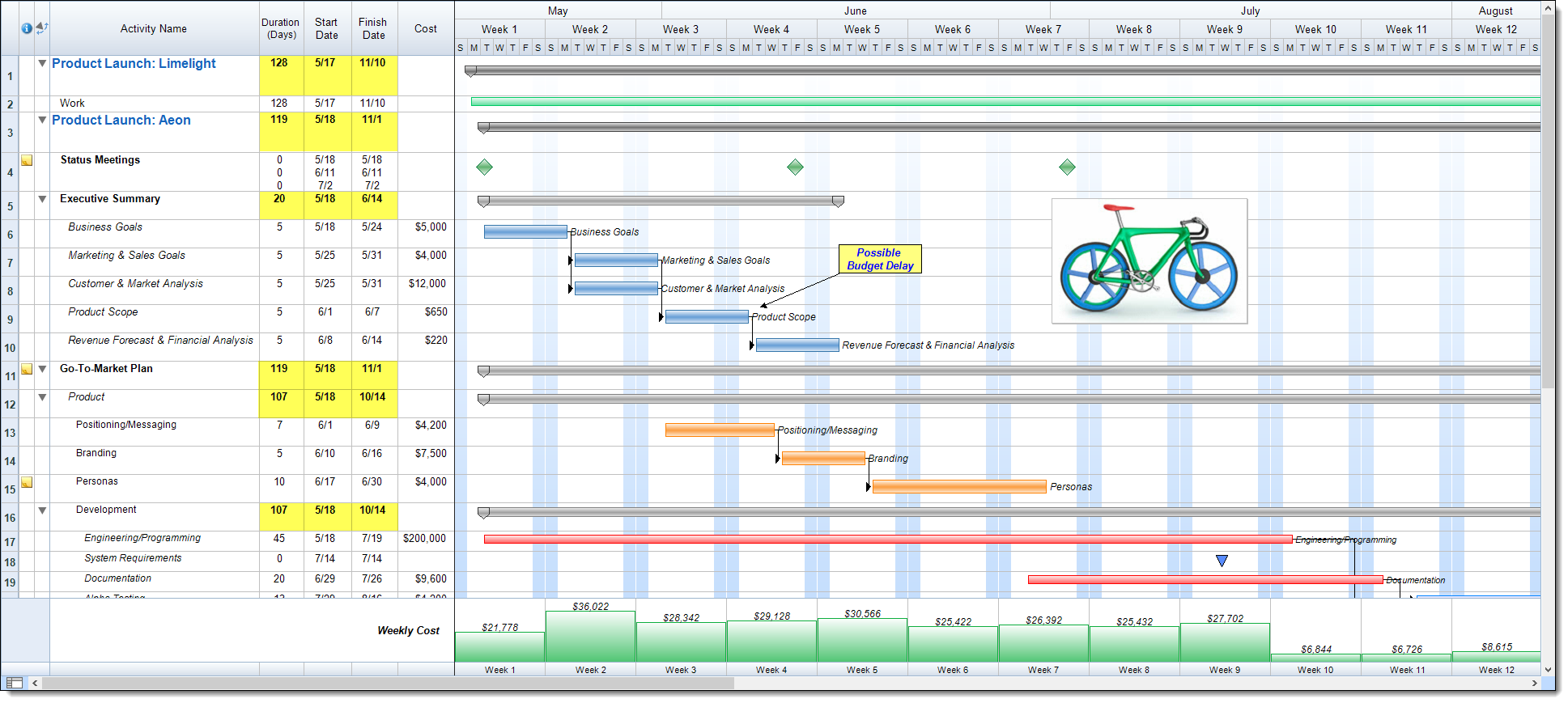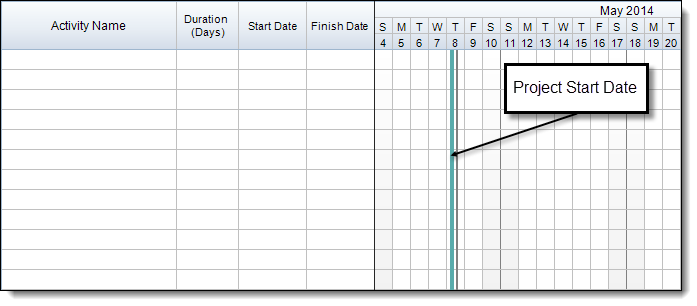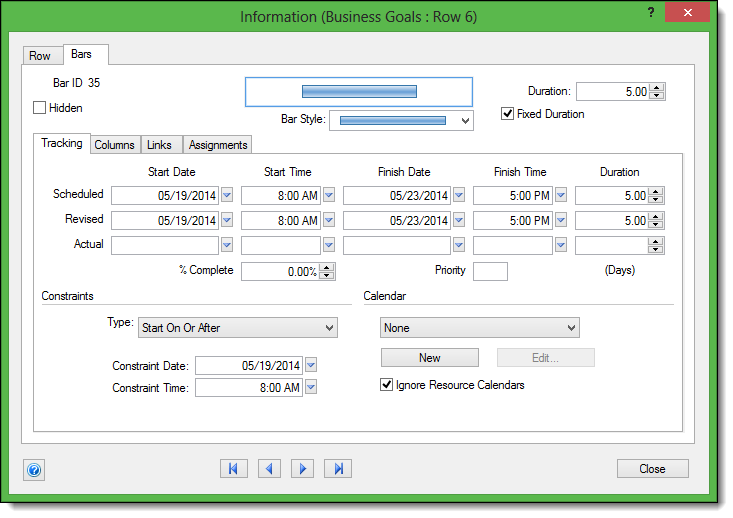
In FastTrack Schedule 10 there are two types of scheduling methods that can be used to control how activities will function within projects. These methods are known as Effort-Driven and Fixed Duration scheduling. Using these methods will allow you to define how activities function as resources are assigned to them.
The first method, Effort-Driven scheduling says that the amount of Work (Hours) needed to complete a task will always remain constant, no matter how many resources are assigned or how much effort each resources applies to that task. As resources are assigned to Effort-Driven tasks the duration of that task will automatically be calculated based on the user defined Work (Hours) and the number of resources assigned.
The second method, Fixed Duration scheduling says that the Duration needed to complete a task will always remain constant, no matter how many resources are assigned or how much effort each resources applies to that task. As resources are assigned to Fixed Duration tasks, the Work (Hours) will automatically be calculated based on the total duration and number of resources assigned.
Continue reading “Effort-Driven vs. Fixed Duration Scheduling [Video]”

 Turning it all around is what project management is all about right? The excitement, the adrenaline rush of jumping in and saving the day. Or saving your own project from near disaster and ending up with a favorable outcome. Well, most of us would rather not have all that excitement if we can avoid it. But the truth is most projects fail in some way or another – more than half of all projects do by most counts, studies and surveys.
Turning it all around is what project management is all about right? The excitement, the adrenaline rush of jumping in and saving the day. Or saving your own project from near disaster and ending up with a favorable outcome. Well, most of us would rather not have all that excitement if we can avoid it. But the truth is most projects fail in some way or another – more than half of all projects do by most counts, studies and surveys. Can one document make or break a project engagement? Seriously…we do lots of planning and lots of prep work, but no two projects are the same and some projects have certain documents and some don’t. What makes one document that much more important than another?
Can one document make or break a project engagement? Seriously…we do lots of planning and lots of prep work, but no two projects are the same and some projects have certain documents and some don’t. What makes one document that much more important than another?
 Usually we want to do things on our own. It is the easiest thing to do, produces the least paperwork, requires the least amount of planning, and the least amount of legal interference (which most of us wish to avoid like the plague). It’s what we’re used to, it’s where our product and project expertise lies, and it’s usually the path of least resistance.
Usually we want to do things on our own. It is the easiest thing to do, produces the least paperwork, requires the least amount of planning, and the least amount of legal interference (which most of us wish to avoid like the plague). It’s what we’re used to, it’s where our product and project expertise lies, and it’s usually the path of least resistance. Sooner or later you’re going to run into this issue yourself if it hasn’t already presented itself as a problem on one of your engagements. You have a project, you have a team. You are ultimately responsible for the success of project and you are ultimately responsible for the work of the project team. You assign the work, you oversee the work, and you report all progress on the work. Sounds like a typical project, correct?
Sooner or later you’re going to run into this issue yourself if it hasn’t already presented itself as a problem on one of your engagements. You have a project, you have a team. You are ultimately responsible for the success of project and you are ultimately responsible for the work of the project team. You assign the work, you oversee the work, and you report all progress on the work. Sounds like a typical project, correct?
 I’ve always been of the mindset that my project is the most important project, and I want the best resources I can get for each skill set. The best of the best to offer my project client…that should keep them satisfied. That should work, right? Wrong! And let me tell you why…at least why I think so and you can give me your opinions.
I’ve always been of the mindset that my project is the most important project, and I want the best resources I can get for each skill set. The best of the best to offer my project client…that should keep them satisfied. That should work, right? Wrong! And let me tell you why…at least why I think so and you can give me your opinions. Project management isn’t all about just leading projects. I like to think that if I’m not leading different types of projects along the way and using those different experiences to become a better project manager and share those experiences with other PMs then I’m not really growing in this role. Nor am I increasing my value to my organization, my colleagues and my project customers.
Project management isn’t all about just leading projects. I like to think that if I’m not leading different types of projects along the way and using those different experiences to become a better project manager and share those experiences with other PMs then I’m not really growing in this role. Nor am I increasing my value to my organization, my colleagues and my project customers.

 It can be as simple as a little blip on the project radar or it can be as large as complete project shutdown and ultimate cancellation and failure. What I am talking about is the act of bringing on a contractor for your technical project, construction project, or other type of project work only to have the contractor bail on the work – sometimes at the worst possible time – leaving you to figure out how best to get the work done, keep the customer satisfied, and keep the project going. Sometimes it’s possible, sometimes it isn’t, and sometimes you may have to take legal action.
It can be as simple as a little blip on the project radar or it can be as large as complete project shutdown and ultimate cancellation and failure. What I am talking about is the act of bringing on a contractor for your technical project, construction project, or other type of project work only to have the contractor bail on the work – sometimes at the worst possible time – leaving you to figure out how best to get the work done, keep the customer satisfied, and keep the project going. Sometimes it’s possible, sometimes it isn’t, and sometimes you may have to take legal action.